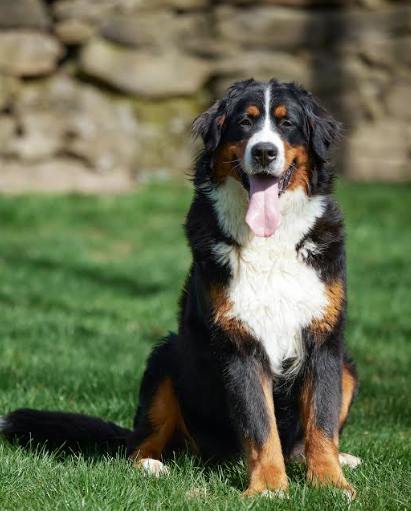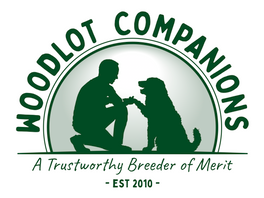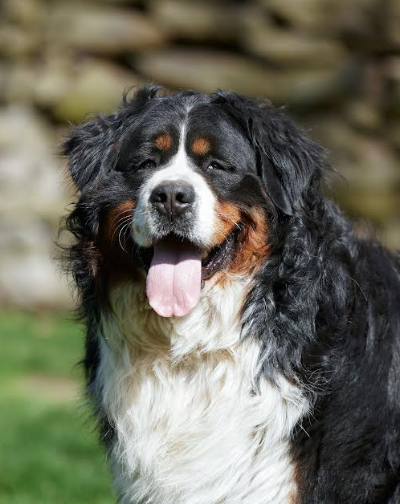Bernese mountain dogs hold a special place in the hearts of dog lovers. If you ask owners, everyone would agree, they are proud of their ideal and loyal companion. Bernese mountain dogs are known for their calm temperament, gentle nature, and strikingly beautiful tri-color coats. Despite their physical charm and unmatched loyalty, the lifespan of this incredibly gifted breed isn’t long. Although it is a heartbreaking fact, they remain a favorite pet for most individuals.
The average lifespan of a Bernese mountain dog is within 6 to 8 years. As you can understand, this is significantly less than other breeds of their size. As mentioned before, owners can never forget the love and affection these dogs can give to family members. So, it is natural to wonder, why they stay with us for such a brief period. Can anything be done to increase their lifespan? Well, let us discuss it.
The size matters but it isn’t the only reason
Dog enthusiasts would probably know this. As a general rule, larger breeds tend to have shorter lifespans than smaller ones. The logic is simple. Being large dogs, their bodies tend to grow more rapidly, and over time, they develop wear and tear on their joints, heart, and organs, and they start to deteriorate in the long run. However, the Bernese mountain dog has an even lesser lifespan than other dogs of their size, and the reason can be attributed to genetics and breed-specific health risks.
High cancer rates are one of the reason
Indeed, it sounds sad, but Bernese mountain dogs have the highest rate of cancer among all the prevalent dog breeds. According to study reports, more than 50% of Bernese develop some form of cancer during their lifetime especially if they develop the following:
- Histiocytosis (a rare, aggressive cancer specific to the breed)
- Lymphoma.
- Mast cell tumors.
- Osteosarcoma (bone cancer).
Genetic blocks and limited breeding
Although the Bernese mountain dog is a favorite among dog lovers, it is relatively rare in various parts of the world. As a result, their genetic pool is also limited. Remember, when a breed originates from a small population, the vulnerability to various health issues increases, and to make matters worse, the inherited health conditions are passed down over the next generations. In the case of the Bernese mountain dogs, the limited genetic diversity is one of the major factors that contributes to the development of such health problems. As a potential dog lover, who is determined to get a Bernese, you can seek breeders who primarily test hereditary issues and unanimously take part in programs to diversify and make their gene pool robust.
Joint and mobility issues are yet another reason
Like most of the large breeds, Bernese mountain dogs are prone to joint problems in the form of hip dysplasia, elbow dysplasia, and arthritis. Like humans, the onset of any one of these problems can induce chronic pain, reduce mobility, and lower the quality of life. Older dogs are more vulnerable and rarely get well from these complications. Persistent pain and inflammation tend to make their immune system weak and further make them vulnerable to other diseases.
Dog owners, on their part, can maintain their healthy weight, take care of the joint supplements, and get in touch with the vet to delay the development of such complications.

Often cardiac issues go unnoticed
Although the Bernese are not so commonly affected by cardiac problems like cancer, it can be attributed as one of the aspects that can shorten their lifespan. Since dog owners also focus more on other issues, heart-related problems can go unnoticed until symptoms surface all of a sudden. To make matters even worse, some Bernese dogs may not show any symptoms of heart problems until they collapse while playing or while in any other form of physical activity. Thus, it is crucial to go for timely screening and observe the changes in behavior.
Delayed detection and aggravation of complications
Continuing from above, illnesses in Bernese mountain dogs, like cardiac arrests or cancer can progress at a rapid pace. As mentioned before, early symptoms in most cases are nonexistent. By the time the dog owner detects an abnormality in their health, it is too late to arrange for adequate treatment. As an owner of a Bernese mountain dog, one should watch out if the breed has a sudden loss of appetite, is limping suddenly, remains unenergetic, and lumps or bumps on the skin.
Can we do anything to increase its lifespan?
As you can understand, we can do nothing to change genetics, but we can make informed choices that can add some more years to our lives. Here are some steps that can make it a possibility:
- Choose a responsible breeder: Before introducing a Bernese at your home, you must ensure procuring it from a responsible breeder. As they will screen for hereditary diseases, and never involve in overbreeding for the sake of making brisk money. Then again, renowned breeders would be more careful when pairing dogs to minimize health risks. Most importantly, these breeders also provide health certifications and insist on long-term contracts. As a potential owner, you should inquire about the cancer history in the bloodline, hip, and elbow scores, heart evaluations, and the longevity of past-generation breeds.
- Go for a high-quality diet: Nutrition can be one of the key elements in ensuring long-term good health for the Bernese mountain dogs. Therefore, when feeding it, one should choose a premium dog food which is rich in the following:
- Joint-supporting ingredients like glucosamine and chondroitin.
- It gets plenty of antioxidants.
- Omega-3 fatty acids can do wonders for the dog.
- Lean proteins.
- Lastly, the owner should ensure the Bernese maintains a healthy weight. The more it weighs, it would put additional stress on the joints and heart.
- Keep their mind and body stimulated: Mental and physical stimulation can help Bernese mountain dogs stay fit and agile longer. Long walks, hikes, and play sessions should be conducted daily. Similarly, for the mind, one should involve the dogs in obedience training, puzzle toys, and so on.
- Emphasize preventive vet care: By scheduling an annual or bi-annual checkups, health-related issues can be detected early. Therefore, never miss out to ask your vet to check them out. Among the routine examinations, blood work, cancer screenings, heart ultrasounds, and orthopedic assessments should be the priority. As you can understand, the earlier a problem is detected the better would be the chances of managing and treating it.
Wrapping it up
There is no denial, Bernese mountain dogs have shorter lifespans and it does hurt. But with the tips mentioned above, you can make an attempt to add a few more years to it. Moreover, with their affection and loyalty, they will fill your life with unbound love. For sure, the impact they will leave on you will stay on forever.



